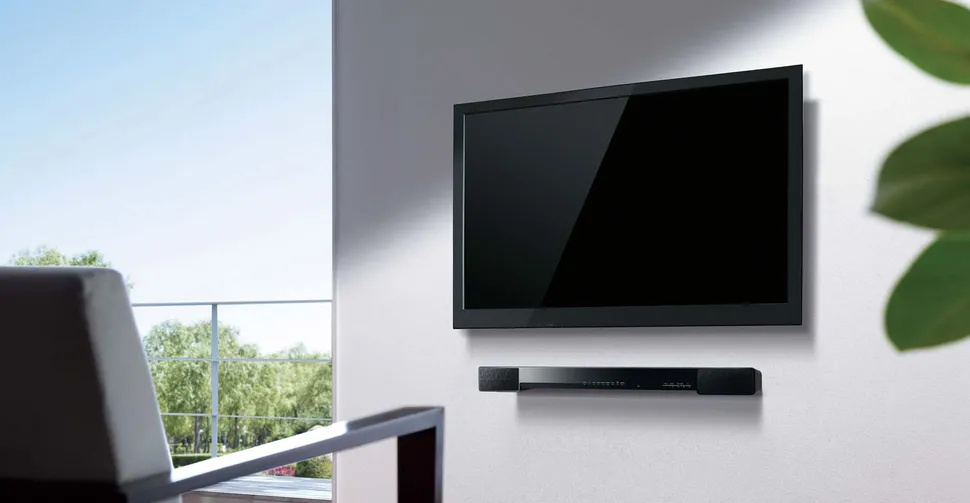7. Audio: Get a soundbar
Even the finest, most expensive HDTVs have an Achilles’ heel: poor sound. It’s a consequence of the svelte design of flat panels — there’s not enough room for large speakers that produce full, rich sound. So, you have three choices: Use headphones (which can make you seem antisocial), buy a surround-sound system (which can be a hassle to set up), or get a soundbar.

Soundbars are popular because, for $300 or less, they can significantly improve the cinematic experience and yet be installed in minutes. The best soundbars are thin enough to fit under a TV stand without blocking the bottom of the picture. Most can also mount under a wall-hanging TV. Several companies also offer sound boxes or stands that can slide under a set.
Some TVs and soundbars also support Dolby Atmos, a newer audio standard from Dolby that includes overhead sound for a fuller listening experience. While you can get the Atmos effect using in-ceiling speakers, many soundbars have Atmos audio processing and upward-firing speakers built-in to create more realistic sounding audio that doesn’t require the multiple speaker placement that you’d have with 5.1 or 7.1 Surround Sound.
And don’t stress about additional cable clutter. Nearly all current TVs feature at least one HDMI port with Audio Return Channel (ARC) capability. This standard HDMI feature provides lets you use HDMI as both an input and an audio output, letting you not only send audio to the TV from your external media devices but also out to your soundbar. That ARC connection means that you get great sound for all your devices, with no special receiver needed – just remember to look out for eARC support (found within HDMI 2.1) if you have an Atmos soundbar, for the very best results.
Bottom Line: Movies and sports benefit from the addition of a soundbar.
